B. W. Raymond Railroad Wrist Chronometer
What killed the railroad "turnip"
Since Mr. Pugh had been pondering the matter for a Long time, he had plenty of ideas on the subject. Indeed, he had already worked out needed modifications for adapting the Elgin "B. W. Raymond." a long-time favorite with many railroaders in America.
Designing a watch wasn't new to Mr. Pugh as he has designed others, including a special number particularly adapted to the needs of nurses. After discussing all phases of the question, Mr. Barriger laid down 10 requirements for approval of any wrist watch for railroad use.
Ten Requirements
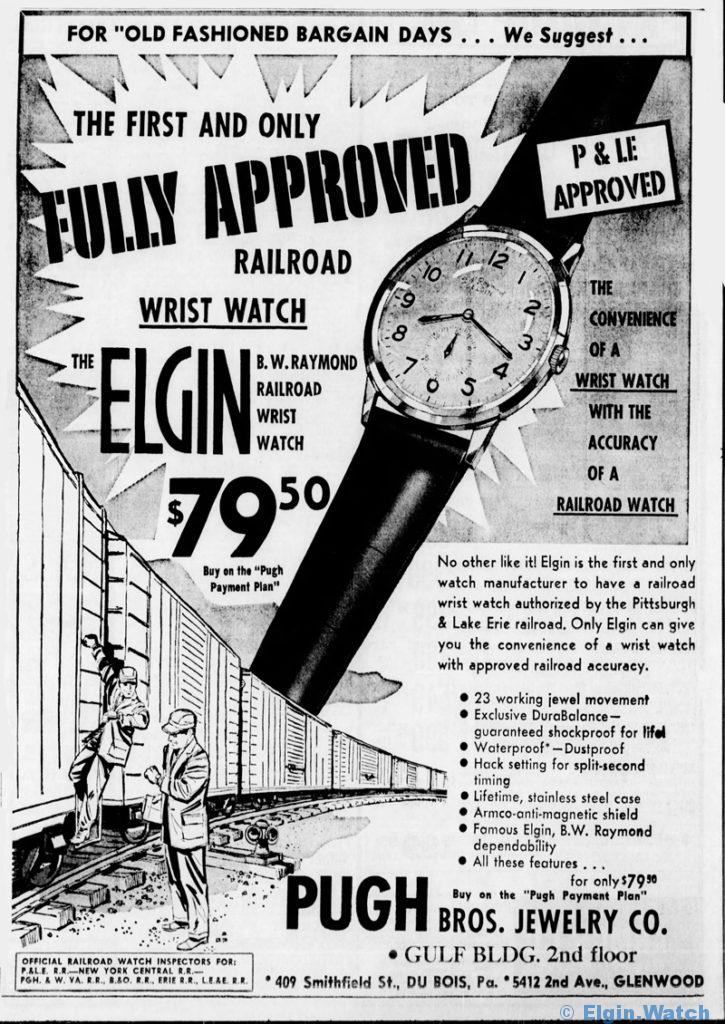 Pittsburgh Post-Gazette, 04 Jul 1960, Page 32[2]Pittsburgh Post-Gazette, 04 Jul 1960, Page 32
Pittsburgh Post-Gazette, 04 Jul 1960, Page 32[2]Pittsburgh Post-Gazette, 04 Jul 1960, Page 32
- 2285 Stainless Steel (Grades 730A, 780)
- 2286 10 KT Gold Filled (Grades 730A, 780)
- 2287 14K Gold (Grades 730A, 780)
- 2685 Stainless Steel (Grade 873)
- 2686 10 KT Gold Filled (Grade 873)
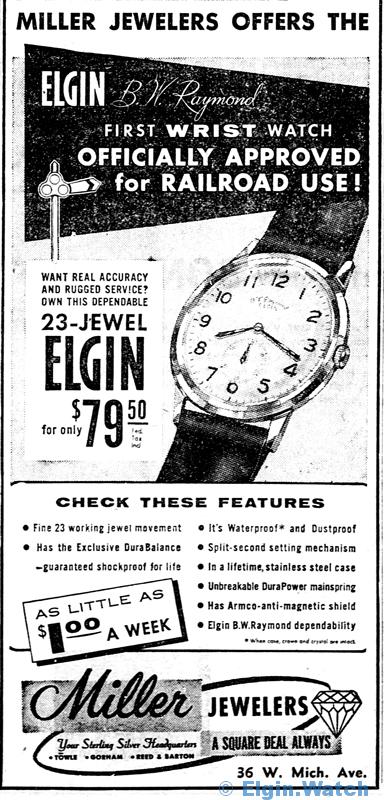
Battle Creek Enquirer, 30 Mar 1961, Page 9[3]Battle Creek Enquirer, 30 Mar 1961, Page 9
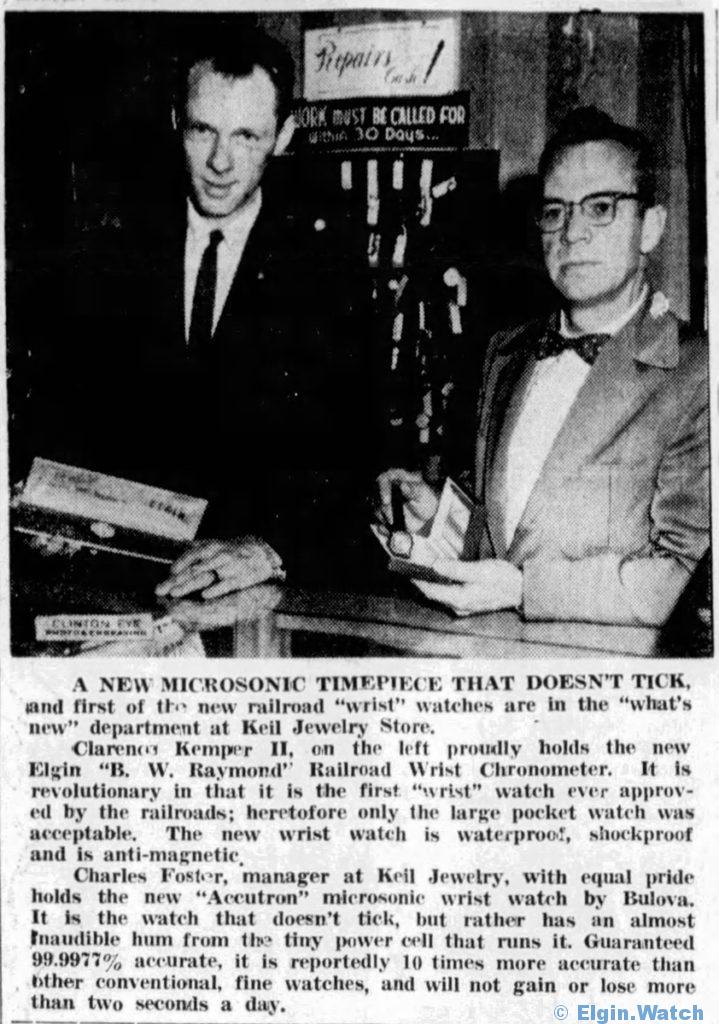
The Clinton Eye, 27 Apr 1961, Thu, Page 3[4]The Clinton Eye, 27 Apr 1961, Thu, Page 3
Elgin would have the railroad wristwatch market to themselves for close to two years and it would be the only wrist watch model and last model to bare the prestigious B. W. Raymond name.
Other Railroad Approved Wristwatches
Bulova would have a Railroad approved Accutron on the market in August 1962, Ball would have a Railroad approved Swiss model on the market in December 1962 and Hamilton would have an electronic Railroad approved model on the market in January 1963.
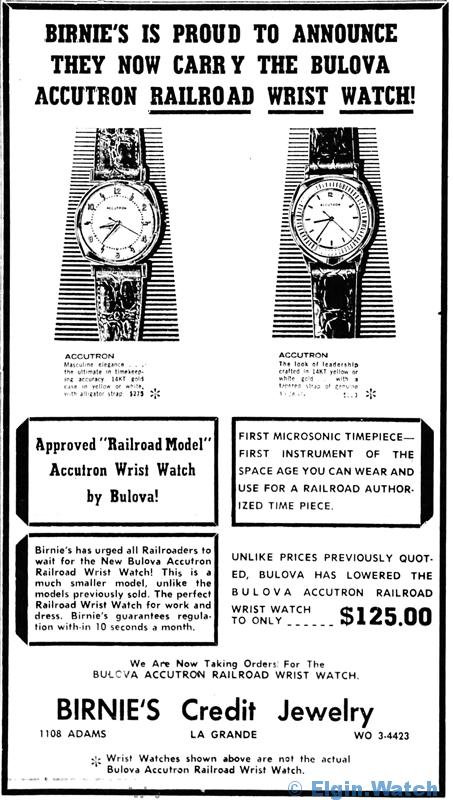
La Grande Observer, 08 Aug 1962, Page 2[5]La Grande Observer, 08 Aug 1962, Page 2
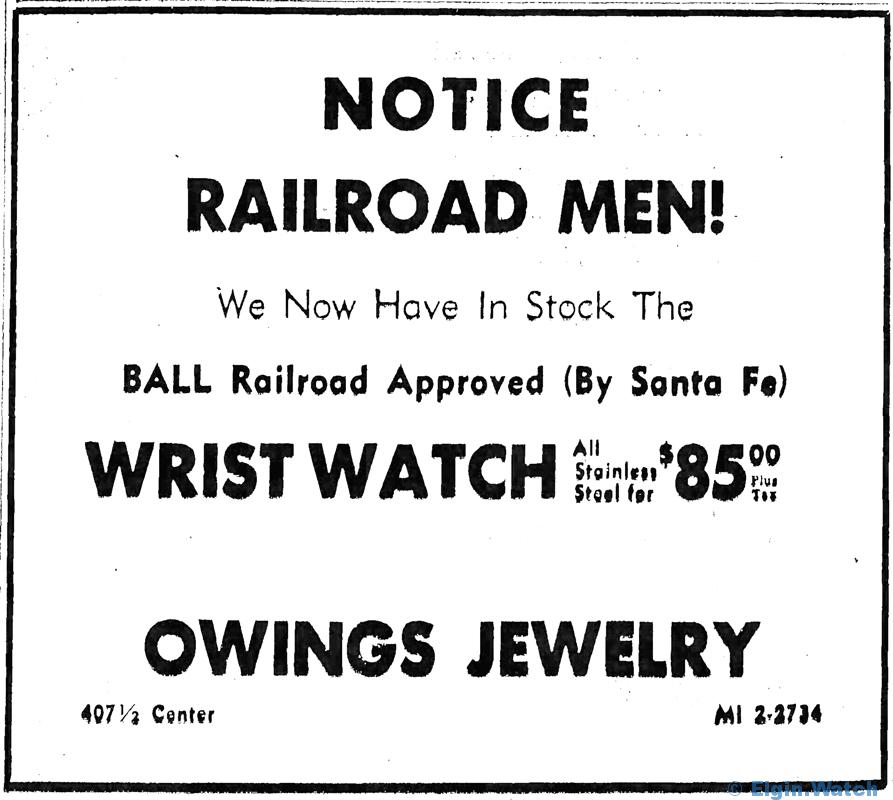
Brownwood Bulletin, 09 Dec 1962, Page 11 [6]Brownwood Bulletin, 09 Dec 1962, Page 11
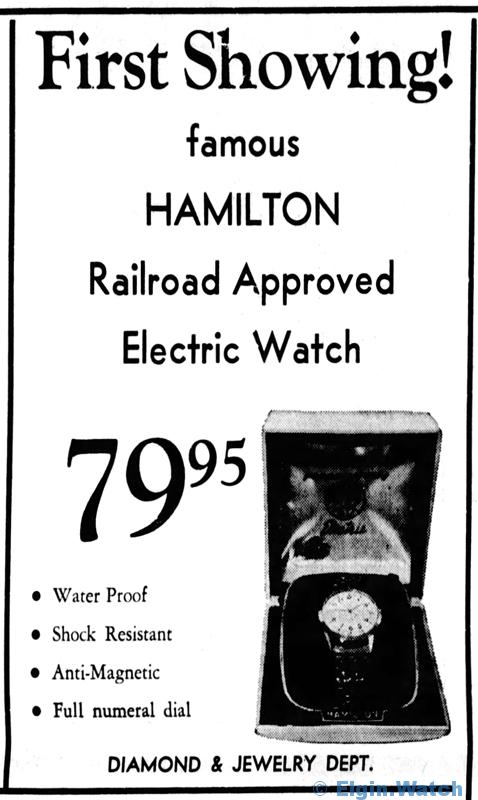
Arizona Daily Star, 10 Jan 1963, Page 6[7]Arizona Daily Star, 10 Jan 1963, Page 6